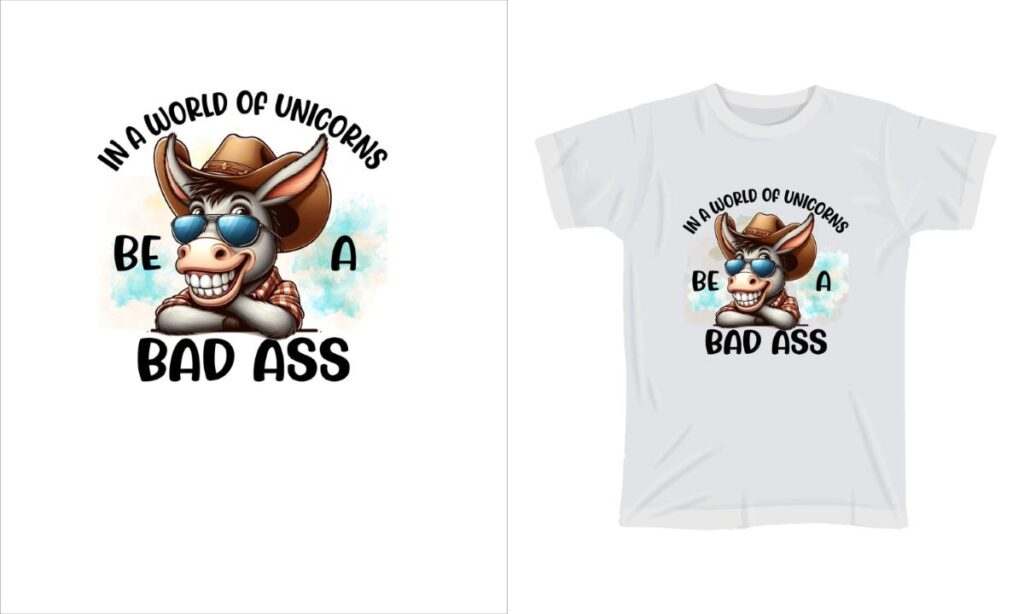UV DTF printing, or UV Direct to Film printing, represents a significant advancement in the world of custom UV printing technologies. This innovative technique allows designers and artists to produce vibrant, high-quality images with intricate textures on various substrates, revolutionizing the design process. Thanks to tools like the eufyMake UV Printer E1, enthusiasts can effortlessly explore creative possibilities ranging from textiles to ceramics. The UV DTF design process merges cutting-edge printing methods with quick UV curing, ensuring durability and vividness that catches the eye. Dive into the captivating world of UV DTF printing and unlock the potential of your creative projects with unparalleled quality and efficiency.
Also known as UV Direct to Film printing, this modern technology has transformed the artistic landscape by making high-quality prints more accessible to designers and hobbyists alike. Utilizing advanced UV printing techniques, this process facilitates the application of bright colors and detailed textures on a variety of materials, making it ideal for numerous creative applications. Notably, the eufyMake UV Printer E1 has emerged as a game-changer, simplifying the UV DTF design process and allowing users to unleash their creativity. By leveraging this innovative solution, anyone can produce stunning custom prints, setting a new standard for artistic expression. Whether you’re crafting promotional items or unique home decor, the possibilities with UV DTF printing are virtually limitless.
Introduction to UV DTF Printing
UV DTF printing, or Ultraviolet Direct to Film printing, represents a significant leap in printing technology, combining the precision of direct-to-film processes with the rapid curing capabilities of UV light. This technology allows for vibrant and intricate designs that are both durable and visually stunning, making it a favorite among artists and designers alike. With machines like the eufyMake UV Printer E1, hobbyists can easily create impressive prints that feature complex textures and detailed graphics.
The application of UV DTF printing extends across various industries, from fashion to product branding. The process involves printing onto a specially designed film, which can be transferred onto a wide range of substrates, including wood, metal, and fabric. This versatility not only enhances creativity but also opens doors for custom UV printing solutions, catering to specific client needs and preferences.
The UV DTF Design Process Explained
The UV DTF design process requires careful planning and execution to achieve the best results. Initially, creators must develop high-resolution artwork using graphic design software. Ensuring the artwork meets resolution standards and is set to CMYK color mode is critical for print quality. These preliminary steps set the foundation for the visually striking output that UV DTF printing is known for.
Once the design is prepared, the next stage is selecting the appropriate materials for printing. The compatibility of the substrate with UV inks determines the final output’s quality. By experimenting with different materials, artists can achieve unique textures and finishes, enhancing the overall design. The design process does not end with printing; adjustments based on test prints can refine the design further, making it a dynamic and adaptable endeavor.
Advantages of Using eufyMake UV Printer E1
The eufyMake UV Printer E1 presents a compelling option for those interested in entering the UV DTF printing market. This printer is compact, making it accessible for home use yet powerful enough to produce commercial-quality prints. One of its standout features is its ability to work with thick inks, allowing for the creation of dynamic, 3D textured designs up to 5mm thick. This functionality sets it apart from traditional printers and caters to designers looking for innovative ways to elevate their artwork.
In addition to its capability for producing textured prints, the eufyMake UV Printer E1 is user-friendly, making it suitable for both novices and experienced users. The printer’s intuitive setup and straightforward controls streamline the UV DTF design process, allowing creators to focus on their artistic vision rather than technical hurdles. This accessibility opens avenues for more individuals to explore custom UV printing.
Key Tips for Creating Eye-Catching UV DTF Designs
When creating designs for UV DTF printing, keeping a few best practices in mind can significantly impact the outcome. First, always start with high-resolution artwork. This not only ensures clarity but also captures the intricacies of your designs, essential for making impactful prints. Additionally, experimenting with colors and textures during the design phase leads to unique outcomes that can differentiate your work from competitors.
Moreover, pay close attention to the test prints. Adjustments made after observing test prints can improve color accuracy and texture quality, which is particularly crucial for UV printing techniques that rely heavily on detail. By refining these elements before the final print, you can achieve a professional finish that resonates with clients and audience alike.
Material Selection for UV DTF Printing
Choosing the right substrate for UV DTF printing is vital for achieving vibrant and durable designs. Options such as wood, metal, plastic, fabric, and ceramic not only expand creative possibilities but also dictate how well the colors and textures will translate from the design to the final print. Each material interacts differently with UV inks, making it essential to experiment and select the best combination for your projects.
In this context, understanding the properties of each material can enhance the likely success of your prints. For instance, while fabrics may absorb inks differently than metal, the right settings and adjustments can yield spectacular results. This knowledge allows designers to push the boundaries of UV DTF printing, creating one-of-a-kind products that appeal to a variety of markets.
The Future of Custom UV DTF Printing
As technology evolves, so does the landscape of custom UV DTF printing. With advancements in machinery like the eufyMake UV Printer E1, the barrier for entry to this creative field continues to lower, encouraging more hobbyists and small businesses to explore UV DTF as a viable means of production. This trend suggests a bright future, filled with diversity in design and innovation.
Furthermore, the rise in demand for personalized products signifies that custom UV printing solutions will only gain traction. Consumers increasingly seek unique, tailored designs that reflect their individual tastes, driving the need for more custom UV DTF printing services. As this market continues to expand, opportunities for new creators to enter the field emerge, ensuring that UV DTF printing remains a dynamic and evolving industry.
Frequently Asked Questions
What is UV DTF printing and how does it work?
UV DTF printing, or UV Direct to Film printing, involves printing artwork onto a special film and using UV light to cure the inks, allowing for vibrant and durable prints on various substrates.
What are the advantages of using the eufyMake UV Printer E1 for UV DTF printing?
The eufyMake UV Printer E1 offers advanced features like 3D texture printing up to 5mm thick, making it ideal for custom UV printing projects and allowing artists to create eye-catching and tactile designs.
What materials can be used for UV DTF printing?
UV DTF printing can be applied to a wide variety of materials including metal, wood, fabric, ceramic, and plastic, enabling diverse applications for designers and artists.
How important is the design preparation in the UV DTF design process?
Design preparation is crucial in the UV DTF design process. It’s important to use high-resolution artwork (at least 300 dpi) and CMYK color mode to ensure quality prints that meet expectations.
What steps should I follow to perform test prints in UV DTF printing?
To perform test prints in UV DTF printing, load the substrate and send your design to the printer. Adjust settings based on the quality of the outputs, ensuring proper color display and texture quality.
What should I consider when selecting a substrate for UV DTF printing?
When selecting a substrate for UV DTF printing, consider its compatibility with UV inks and its texture. Different materials may require specific settings and treatments to achieve optimal results.
| Step | Description |
|---|---|
| Step 1: Design Preparation | Create high-resolution artwork (300 dpi, CMYK color mode) for UV DTF printing using design software. |
| Step 2: Material Selection | Choose appropriate substrates (e.g., metal, wood, fabric) compatible with UV inks. |
| Step 3: Printer Setup | Calibrate printer settings for color accuracy and material-specific adjustments. |
| Step 4: Test Prints | Perform test prints to adjust settings for color and texture quality. |
| Step 5: Final Printing | Secure substrate in printer, send design, and monitor printing process for quality control. |
Summary
UV DTF printing is revolutionizing the way artists and designers create unique prints, offering vibrant colors and the possibility of intricate textures on a variety of materials. By following the outlined step-by-step process, individuals can maximize the capabilities of this innovative technology, making it accessible for both personal projects and small businesses. The rise of user-friendly printers, like the eufyMake UV Printer E1, has opened new avenues for creativity, allowing for impressive three-dimensional effects and custom designs that cater to the increasing demand for personalized items in various markets.



